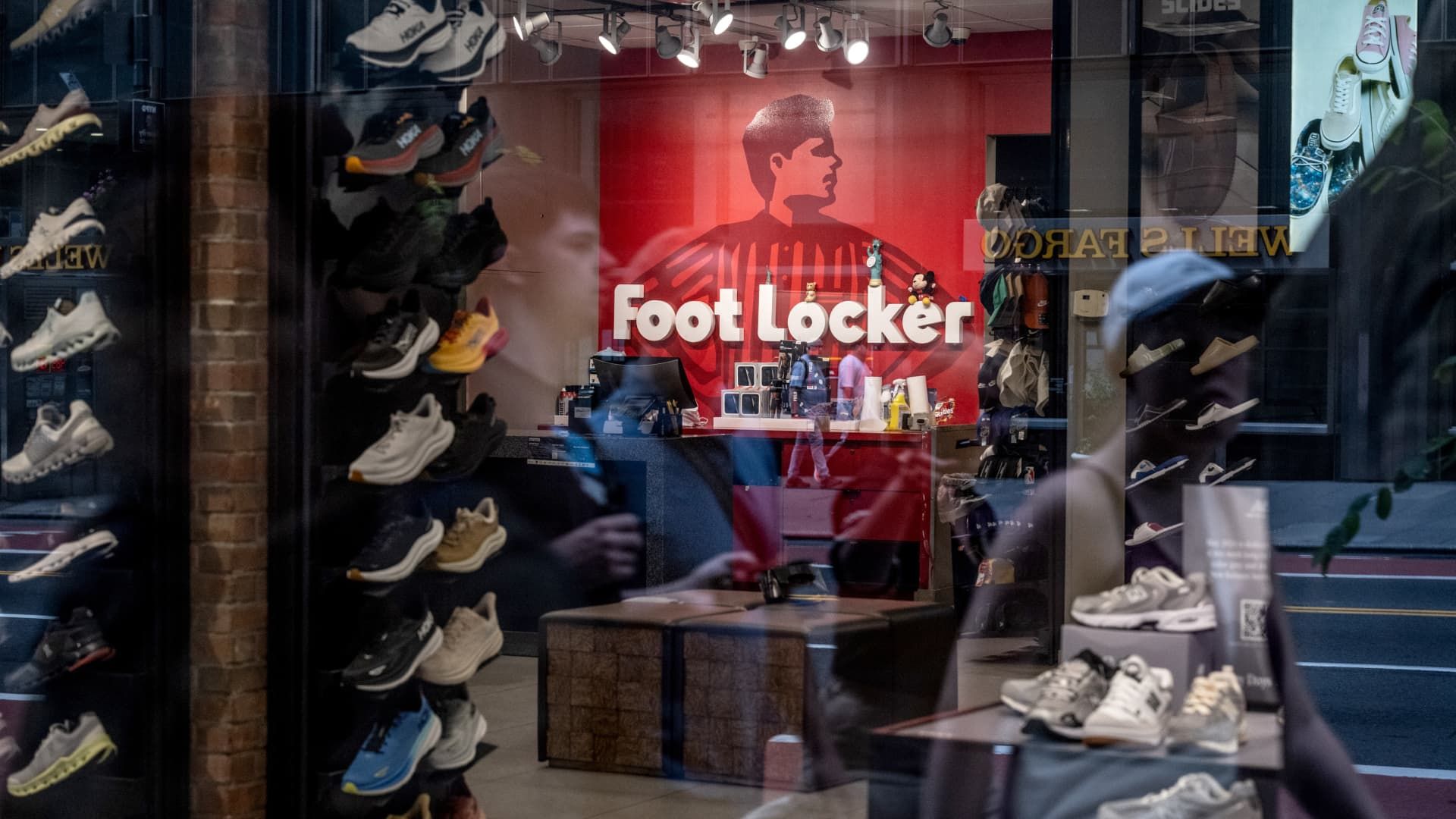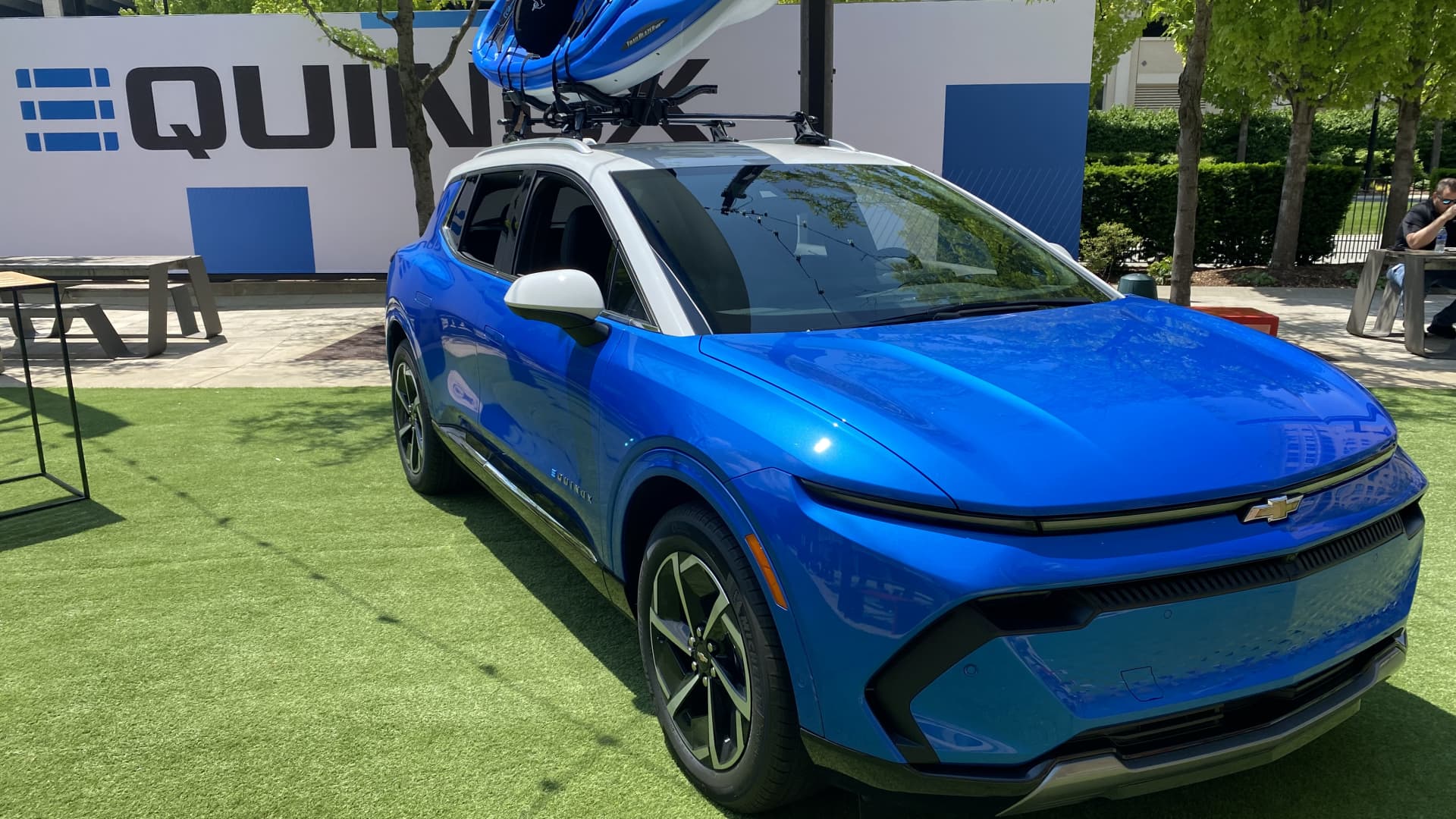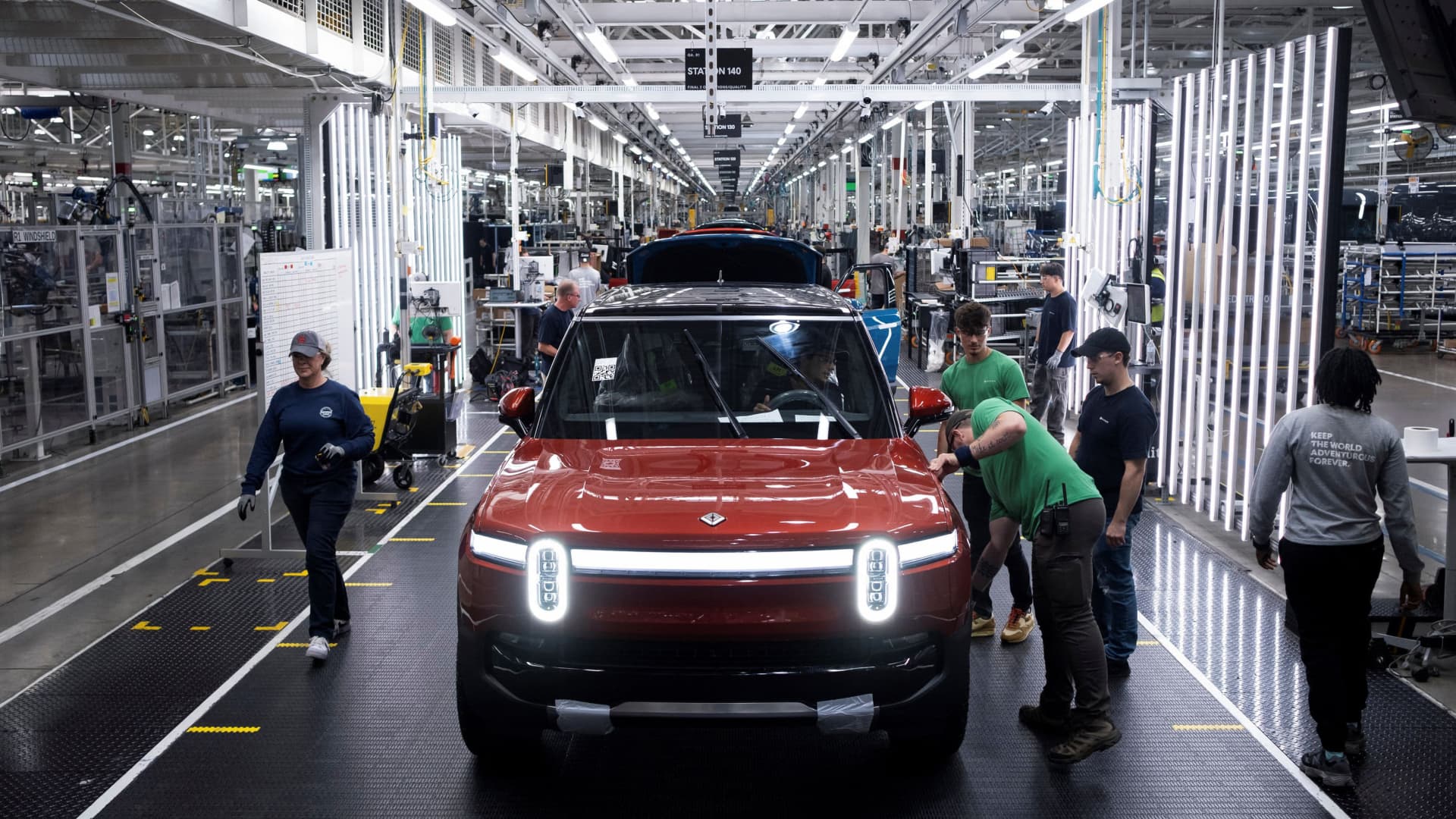Foot Locker The recovery is starting to bear some fruit.
The sneaker giant saw a comparable sales decline of 1.8% during its fiscal first quarter, much better than the 3.1% decline analysts were expecting, according to StreetAccount.
It also reaffirmed its guidance for the fiscal year, which projects sales will be in a range of a 1% drop to a 1% gain, compared with a 0.6% drop that analysts had forecast, according to LSEG.
Here's how the company fared compared to what Wall Street anticipated, according to a survey of analysts by LSEG:
- Earnings per share: Adjusted 22 cents vs. expected 12 cents
- Revenue: $1.88 billion vs. $1.88 billion expected
Foot Locker's reported net income for the three-month period ended May 4 was $8 million, or 9 cents per share, compared with $36 million, or 38 cents per share, a year earlier. Adjusting for one-time items, including impairments associated with certain store closures and restructuring, among other costs, Foot Locker reported earnings of 22 cents per share.
Sales fell to $1.88 billion, down about 3% from $1.93 billion a year earlier.
For the full year, Foot Locker expects adjusted earnings per share to be between $1.50 and $1.70, above estimates of $1.57, according to LSEG.
Comparable sales growth is expected between 1% and 3%, ahead of the 1.5% growth analysts were expecting, according to StreetAccount.
“We had a strong start to the year in the first quarter, which shows that our 'Lace Up Plan' is working,” CEO Mary Dillon told CNBC in an interview. “The reason I feel confident is that we are launching an improved FLX rewards program, so we have a lot of opportunities with rewards. We are launching a revamped mobile app, which we know is a great way to drive customer engagement and commerce and “We see growth opportunities… with all of our brand partners throughout the year, including a return to growth with Nike in the Christmas quarter.”
Dillon, the former CEO of Ulta Beautyhas been working to turn Foot Locker around, but those efforts have taken longer than expected.
Sales have fallen steadily as the retailer grapples with a low-income consumer, who has felt the brunt of inflation more acutely than other shoppers, and partners with fickle brands like Nikewhich has reduced the number of new releases it sent to Foot Locker stores.
Its Champs Sports brand has also been hurting the overall business, with comparable sales falling a staggering 13.4% during the quarter and overall revenue falling almost 19%.
Foot Locker has had to rely on promotions to boost sales and has lost the trust of Wall Street, with shares down about 28% so far this year as of Wednesday's close.
However, things are starting to look up for the company.
In April, Nike CEO John Donahoe acknowledged that the brand went too far when it excluded wholesalers in favor of its own stores and website and told CNBC that it is “investing heavily with our retail partners” as it makes its own recovery effort.
While Foot Locker's core consumer is still under the pressure of inflation, Dillon said the company's average selling price increased during the quarter, showing its consumers are willing to pay full price for the right product. .
“Our consumer… this is a category that is very important to them. So when people have discretionary income, it may be limited, but you're going to prioritize where you spend it, right?” Dillon said. “So they're prioritizing, but I would say they're spending with a purpose.”
Dillon has also been working to renovate Foot Locker stores, where it still generates about 80% of its annual sales. It has built new locations outside of malls, closed underperforming stores, and renovated existing locations so that brands are willing to ship their best products and consumers are willing to choose Foot Locker instead of shopping directly with a brand or go to a competitor like Dick's Sporting Goods.
In April, the retailer unveiled its “store of the future,” which completely changes the old-school Foot Locker format and will be used as a model for its store updates.
“Instead of a wall of shoes, it's really a house of brands,” Dillon said. “And I think it's coming to life in a way that our brand partners are excited about. We've heard that from everyone.”










